Are you a Quiet Speculation member?
If not, now is a perfect time to join up! Our powerful tools, breaking-news analysis, and exclusive Discord channel will make sure you stay up to date and ahead of the curve.
The more things change, the more they stay the same. Despite recent bannings, the targeted decks are rising up again, reinventing themselves in novel ways.
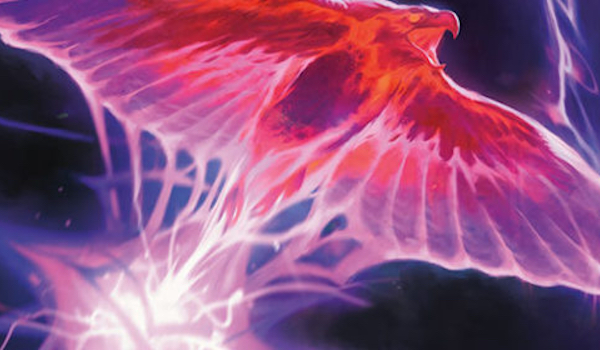
Axing Once Upon a Time from the format heralded an imminent paradigm shift for Amulet Titan, an enduring archetype that had redesigned itself around the free cantrip so drastically as to begin omitting its namesake artifact. Similarly, the Faithless Looting ban was thought to utterly antiquate UR Phoenix, a deck that dominated competitive Modern for months on end.
Variations of each deck are now cropping up online. Today, we'll examine the alterations and compromises they've made to stay in the game.
Landing on Both Feet
All the talk about Uro, Titan of Nature's Wrath shouldn't distract us from the reality of Primeval Titan, which is very much still a Magic card post-ban. Amulet Titan had transitioned from a land-combo game-ender to a land-toolbox value engine. Now, it's splitting into four distinct shells, with the pivotal card not Titan itself, but Dryad of the Ilysian Grove.
Value Titan, GLEICIANO (5-0)
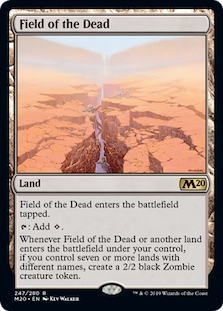 Value Titan picks up where recent shells left off. Amulet is still absent. Instead of reinstating it, the deck makes use of Castle Garenbrig to ramp into early Titans; Dryad acts as a Pact-able Prismatic Omen and land deployer all in one.
Value Titan picks up where recent shells left off. Amulet is still absent. Instead of reinstating it, the deck makes use of Castle Garenbrig to ramp into early Titans; Dryad acts as a Pact-able Prismatic Omen and land deployer all in one.
Once Titan resolves, its triggered ability grabs a pair of Valakuts and gives the deck a turbo-charged Field of the Dead plan, in that it ignores any removal spells opponents might have on-hand for the Titan. Should Dryad also bite the dust, Field too makes an appearance here.
Amulet Titan, DIA83 (5-0)
Now, here's a familiar face! Amulet Titan was a competent Modern deck even before Once Upon a Time was printed, and here returns to its roots while accommodating a few proven techs. First up is Dryad, of course, but then there's Castle and even Andrios, Roaming Explorer. The consistency provided by blue cantrips Sleight of Hand or Serum Visions, standbys in older builds, has been deemed unnecessary compared to the on-color utility of newer arrivals.
Simic Scapeshift, WOTC_ANDREWB (5-0
In the olden days, Scapeshift was a Temur deck packed with interaction that aimed to suppress opponents long enough to make seven land drops and cast the sorcery for lethal Valakut damage. Simic Scapeshift, which has posted two results, mirrors 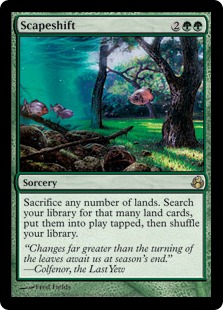 that plan but does away with the red splash entirely, preserving only Valakut among red-producing lands. The reason? Blue-green happens to be a competent interactive combination for the first time since ever.
that plan but does away with the red splash entirely, preserving only Valakut among red-producing lands. The reason? Blue-green happens to be a competent interactive combination for the first time since ever.
Ice-Fang Coatl and Uro, Titan of Nature's Wrath have carved out an undeniable niche as a midrange package, but they tend to be featured alongside Arcum's Astrolabe. Simic Scapeshift has no room for that kind of air, using its early-game to deploy tapped lands, cast Growth Spiral-style ramp effects, and interact with the stack. Uro pulls double-duty here as a ramp spell that also provides a fair Plan B, just as Tarmogoyf sometimes did for the deck's early iterations.
Bring to Light Scapeshift, SUNGJIN (4-1, Modern Preliminary #12106076)
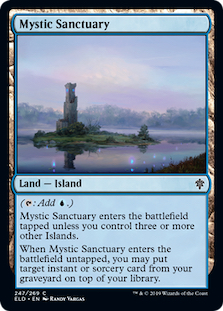 Bring to Light Scapeshift is another archetype we've had in Modern for a fair bit—specifically, since Bring was first released. But who are we to deny it the latest goodies for land and ramp decks? In go Uro and Dryad, as well as Mystic Sanctuary; the land can be fetched to put Scapeshift back on top of the deck for another combo attempt.
Bring to Light Scapeshift is another archetype we've had in Modern for a fair bit—specifically, since Bring was first released. But who are we to deny it the latest goodies for land and ramp decks? In go Uro and Dryad, as well as Mystic Sanctuary; the land can be fetched to put Scapeshift back on top of the deck for another combo attempt.
Passing With Flying Colors
Titan didn't have much time since the ban, but it's already bouncing back in a few ways. The same can't really be said of Arclight Phoenix, which went AWOL after losing Looting. Until now, that is; players are figuring out how to leverage their Looting replacements in a world unhindered by off-theme, off-color cantrips.
UR Phoenix, DRACONIC1 (3-2, Modern Preliminary #12110946
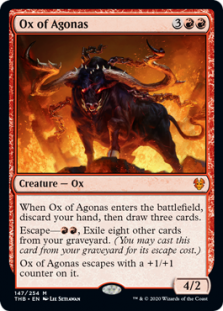 We'll kick things off with the classic UR Phoenix. This deck has made some serious adjustments, adding Merchant of the Veil to support Izzet Charm in cheaply getting Phoenix from the deck to the hand to the graveyard.
We'll kick things off with the classic UR Phoenix. This deck has made some serious adjustments, adding Merchant of the Veil to support Izzet Charm in cheaply getting Phoenix from the deck to the hand to the graveyard.
Ox of Agonas also joins the deck's payoffs, equally serving as an enabler; players with enough mana can chain together a few cantrips and then escape Ox to discard any drawn Phoenixes and set up a big combat step. Because Ox is a threat in its own rite, Aria of Flame finds itself with just one copy in the main, although it remains an alluring sideboard plan for when opponents bring in Rest in Peace or Grafdigger's Cage.
Hollow Phoenix, CORONTHEMORON (5-0
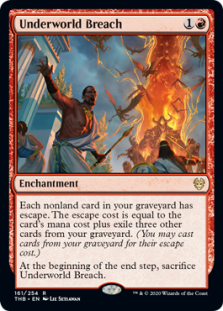 Yet another blast from the past, Hollow Phoenix combines the Arclight package with the Hollow One package to generate tons of board pressure as quickly as possible. Faithless Looting once fueled both plans at once, making it the deck's de facto engine grease. Without it, some new packages have been implemented.
Yet another blast from the past, Hollow Phoenix combines the Arclight package with the Hollow One package to generate tons of board pressure as quickly as possible. Faithless Looting once fueled both plans at once, making it the deck's de facto engine grease. Without it, some new packages have been implemented.
There's Ox of Agonas again, doing also for Hollow what it does for Arclight. Reason being it can be cast from the graveyard given an active Underworld Breach. In other words, ending a looting chain with Breach gives the deck Dredge-like levels of recursion, making it difficult for attrition decks to keep up without heavy-duty grave hate.
Hollow Hearld, PSBARO (5-0
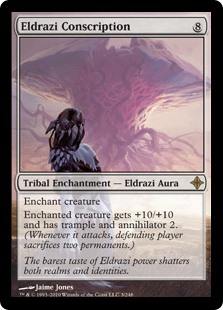 Adding another twist to the strategy, Hollow Herald employs Storm Herald to slap a looted-away Eldrazi Conscription onto an attacking creature. The plan is just as grave-reliant and far tougher to pull off (a timely removal spell ends the interaction decisively), but it's probably quite wild to witness!
Adding another twist to the strategy, Hollow Herald employs Storm Herald to slap a looted-away Eldrazi Conscription onto an attacking creature. The plan is just as grave-reliant and far tougher to pull off (a timely removal spell ends the interaction decisively), but it's probably quite wild to witness!
As the World Turns
It appears that despite the craziness going on in the world around us, Modern's brewers are not a bunch to be outdone. Tune in next week for a closer look at some of the month's more under-the-radar strategies.



